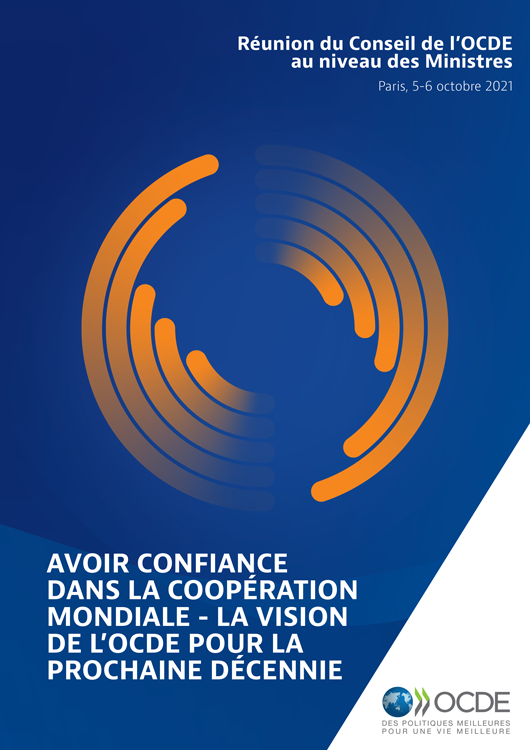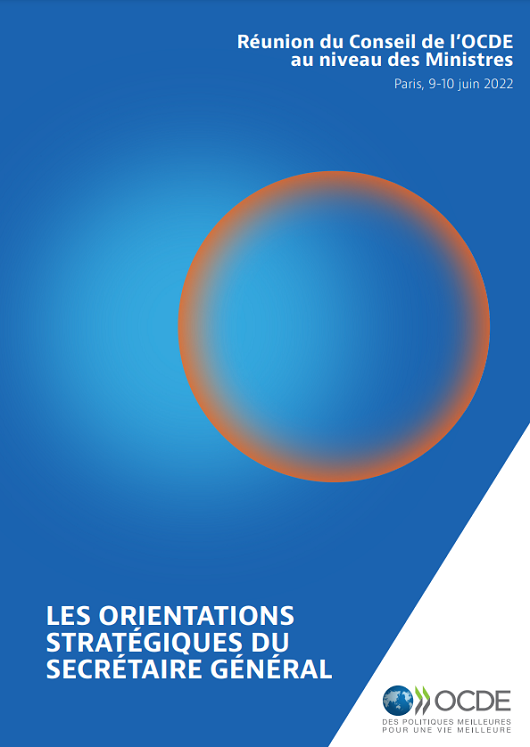Remarks by Angel Gurría, OECD Secretary-General, delivered at the Roundtable on Long-term Investment: Closing Address
26 November 2014, Paris, France
(As prepared for delivery)
Ladies and gentlemen,
I am delighted to draw to a close this important Roundtable – a full and exciting “Long-Term Investment Policy Day”. I would like to thank our co-organisers, Euromoney, for their sterling work.
Too often today, whether in the political or corporate worlds, the focus is squarely on the short-term: on the next election or the next quarter. Likewise, investors are incentivised to focus on shorter-term financial returns. As a result, we are failing to reap the social, economic and environmental returns of long-term productive investment.
That’s why the OECD’s Long-Term Investment initiative, including our work with the G20, and today’s Roundtable are so important.
Global growth remains subdued, but reforms will pay off in the medium term
According to the latest OECD Economic Outlook, published yesterday, global growth is set to remain subdued. We expect activity to pick up by 2016, but it will remain modest by historic standards. The Euro area and Japan are currently the two most worrying spots on the OECD map, with an expected pick-up in growth to just over 1½ percent in 2016.
And this already assumes stronger policy support than is currently on the table. In the emerging world, China is experiencing a slowdown to more sustainable growth rates of around 7% while growth is expected to remain weak in Russia and Brazil and only pick up slowly in India.
We need faster growth to create jobs and reduce unemployment, but we are running out of monetary and fiscal ammunition. Structural reform is our best hope to improve economic prospects.
At the G20 Leaders’ Summit in Brisbane two weeks ago, the Australian Presidency accomplished a master-stroke in getting countries to commit to structural reforms to raise GDP by 2% by 2018.
This is the first time there has been a “hard” commitment like this. An extra 2% might not sound like a lot, but it is the equivalent of adding Australia and New Zealand to the world economy over the next 5 years, on top of what would happen without this commitment.
The OECD and the IMF have been tasked with assessing whether G20 countries are following through on their commitments.
A heavy dose of structural reform will be needed to get the four cylinders of the global growth engine – investment, trade, credit and emerging markets –firing at cruising speed again.
Investment has not regained its place as the global economy’s driving force
Tomorrow’s growth calls for investment today. But investment is partly driven by confidence in the future, which remains weak amid concerns about geopolitics, pandemics and the potential onset of ‘secular stagnation’. This magnifies the challenges policymakers face in mobilising long-term investment, whether in infrastructure, start-up businesses, or other productive assets.
In Brisbane, the issue of long-term financing for sustainable and durable growth was also an important theme, as reflected in the Leaders’ communiqué. And with good reason.
In many countries, including advanced countries like the US and Germany, significant investment in infrastructure is needed to support sustainable growth and enhance productivity. It is estimated that $3.6 trillion of investment is needed by 2020 to improve domestic public infrastructure in the US.
In Germany, meanwhile, some EUR 50bn a year could be needed over the same period to address its infrastructure gap while achieving its ‘Energiewende” goals for renewable energy.
One can understand, therefore, why there is such an urgent need for long-term investment to come to the fore within the OECD and at the G20 as an integral part of countries’ multi-year plans for growth.
Similarly, the European Commission this morning announced its long-anticipated three-year ‘Investment Offensive to boost jobs and growth’. The new European Fund for Strategic Investments (EFSI) aims to mobilise at least EUR 315 billion of additional investment over the next three years, using EUR 21bn in seed money from public sources. This is an important step in the right direction.
The public sector has traditionally played an important role as a long-term investor in economic development, particularly for infrastructure projects. However, with governments facing tight fiscal constraints, they need to better target their scarce resources while mobilizing private sector investment.
They need to identify private sector partners for particular projects and to get the policy framework and alignment of incentives right. A veteran footballer can have a bright future as a referee, setting the ‘rules of the game’!
And, what is the state of play today?
Improving the supply of finance for productive investment means solving the apparent “institutional investor puzzle”. For example, according to the new OECD Large Pension Fund Survey presented here today, and in line with previous evidence, less than 1% of respondents’ total assets under management are actually invested directly in infrastructure.
That’s only USD 80 billion out of more than USD 90 trillion worth of investments. The ‘puzzle’ is that, on the face of it, infrastructure investment should be an appealing asset class for institutional investors who are looking for long-term, inflation-adjusted cash-flows to match their long-term liabilities.
Our Survey reveals significant scope to expand investment in this asset class. For instance many funds that do invest in infrastructure don’t meet their allocation targets for the asset class, while many others don’t invest in infrastructure at all.
Others, like CALPERS in the US, are ramping up their allocations to infrastructure investment, but so far these efforts are a drop in the ocean. Clearly major barriers to long-term investment remain, and it is the job of policymakers to break them down.
We need policy solutions to remove obstacles to long-term investment
The G20/OECD High-Level Policy Principles on Long-Term Investment Financing by Institutional Investors provide a solid starting point for tackling these issues. Following the guidance of G20 Leaders in Brisbane, we now need “to walk the extra-mile” and move “from solutions to actions”.
To this end, let me briefly address a few practical issues:
First, we need to address the issue of the governance of institutional investors. The lengthening ‘investment chain’, with bigger distances between assets’ beneficial owners and those involved in executing investment strategies, necessitates well-aligned incentives for every link in the chain.
We must remember that most of the money that circulates in this investment chain ultimately belongs to ordinary working people. Money they save for retirement or perhaps their children’s education. Similarly, those executing the investments also need to have the right skills and expertise to be able to expand their investment universe to alternative asset classes, in particular those that can support infrastructure investment and green projects.
Second, we need to address the question of financial regulation and its impact on the ability of institutional investors to provide financing for growth.
There is a need to balance stability and transparency against the need to ensure that institutional investors can act as proper financing channels for investment. For example, strict solvency rules, and related ‘mark to market’ accounting, may inadvertently put a brake on productive investment. More generally, governments need to ensure that the “conditions for investment” reduce legal and regulatory uncertainty.
Third, there is a clear need for more in-depth discussion on what are the most relevant and efficient financial instruments for long-term investment. We need to look at project financing needs across the entire life-cycle of investments to identify the optimal “division of labour” between different providers of finance.
“Pooling” mechanisms to get large and small institutions to participate in debt and equity financing can also play an important role. To facilitate these discussions, the OECD is developing a taxonomy of techniques, instruments and vehicles that policymakers can use to leverage private sector financing in infrastructure.
Ultimately, these three issues are just a sub-set of the much broader question as to what type of financial system we wish to construct. In advanced, emerging and developing economies alike, there is a need to enhance the role of fair and transparent capital markets. We need to consider concrete steps like the development of local currency bond markets; the issuance of project bonds; and the development of appropriate hedging instruments.
On these and many other issues, we are working together with the incoming Turkish presidency of the G20 on how best to advance the LTI agenda to promote stronger, fairer, greener growth.
Ladies and gentlemen:
Solving the long-term investment ‘puzzle’ is, by its very nature, a shared endeavour between public and private sectors. Policymakers need to partner with institutional investors to find workable solutions and harness their capacities for financing growth.
This is the reason why today’s discussion is so important, and why I personally attach a lot of importance to the OECD’s Institutional Investors and Long-Term Investment project.
Results at the G20 to date, and the marching orders we received in Brisbane, show that our hard work is paying off. Together, we are laying the foundations to design, develop and deliver better investment policies for better lives.
Thank you.
Also AvailableEgalement disponible(s)

